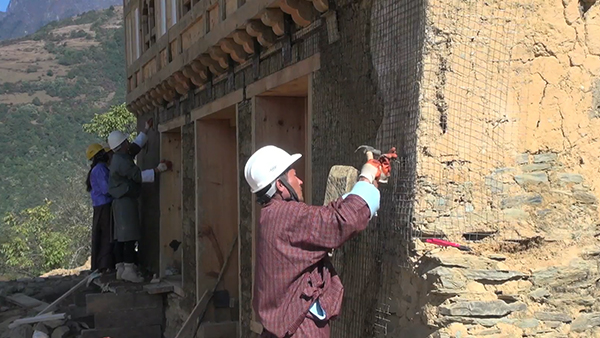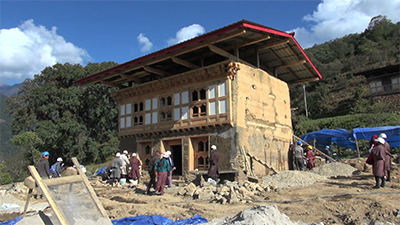 The country is no stranger to earthquakes. But when major ones struck in 2009 and 2011, most of the traditional structures failed the resilience test. Situated in the Himalayan range which is considered an active earthquake-prone zone, being prepared is crucial. Therefore, the department of culture is training carpenters and masons on how make traditional buildings more resilient to earthquakes.
The country is no stranger to earthquakes. But when major ones struck in 2009 and 2011, most of the traditional structures failed the resilience test. Situated in the Himalayan range which is considered an active earthquake-prone zone, being prepared is crucial. Therefore, the department of culture is training carpenters and masons on how make traditional buildings more resilient to earthquakes.
 About 25 participants, mostly traditional carpenters and masons as well as a few dzongkhag engineers, took part in the recent two-day training.
About 25 participants, mostly traditional carpenters and masons as well as a few dzongkhag engineers, took part in the recent two-day training.
The participants were taught about wrapping the walls with mesh from both the outside and inside to protect the rammed earth structures.
According to Phuntsho Wangmo (Ph.D.) from the Department of Culture, this technique is not only simple but also very effective. “When we conducted experiments of the mesh-wrapped retrofitting technique, we found that the strength of the building is improved by 300 per cent.”
“I feel the mesh wrapping techniques can help people escape unhurt even if a building collapses due to an earthquake,” said a participant, Kuchum, who works in one of the monasteries in Paro.
Meanwhile, Kinzang, an assistant engineer at the Paro Dzongkhag Administration Office says many do not know about such techniques. “Earlier, there were no clear guidelines for such techniques even if people wanted to use this method.”
Similarly, Gyeltshen, a senior traditional carpenter says he never knew such techniques existed. “We used to insert only a few planks and timber in the middle walls while constructing traditional houses. We did not know of methods like these to protect against earthquakes.”
This is the first training which is exclusively about protecting rammed earth buildings. The department also has plans to carry out trainings for refurbishing stone masonry buildings and about how to apply the techniques when constructing new traditional buildings.
The department will also come up with a user guideline in the future.
The training is a part of the Project for Evaluation and Mitigation of Seismic Risk for Composite Masonry buildings in the country which is being carried out with financial support from the government of Japan. The project began in April 2017 and is expected to be completed by March, 2023.
Changa Dorji, Wangdue Phodrang
Edited by Yeshi Gyaltshen












